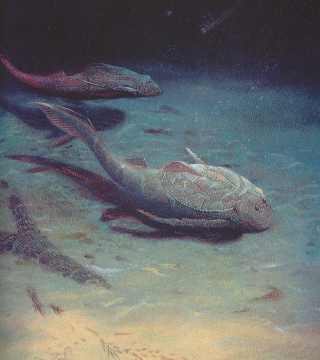 |
Placoderm
Outcrop in the
Payson
Area
Devonian
Marting Formation,
Basal brackish
water member
|
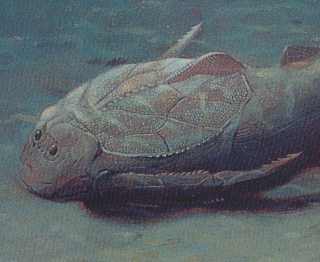 Bothriolepis sp.
Note the large ridge plate on
the back. The Y shaped pieces between
the eyes is also seen here.
Bothriolepis sp.
Note the large ridge plate on
the back. The Y shaped pieces between
the eyes is also seen here.
|
Updated 5/5/14
 |
The earliest
known jawed armored fish in North America come from the Devonian.
These primitive fish, known as Placoderms (Bothriolepis) occupied
fresh, brackish and marine environments during that time dominated
by bottom and mid level ecological niches. Placoderms were covered
by dense bony armored plates, articulated with joint lines to
allow limited movement. This dense covering allowed many of the
species to be preserved in the fossil record as collections of
both articulated and disarticulated plates, known informally
as "Fish Plates" amongst paleontologists. Recently,
we rediscovered the long lost Arthrodirian Sandstone named by
Stoyanow in 1936, at a location north of Payson and here we describe
additional exploration of that locality in early May of 2014.
Note:
Because of the extreme rarity of this site and value to the professional
paleontological community, the exact location of this locality
will remain protected.
|
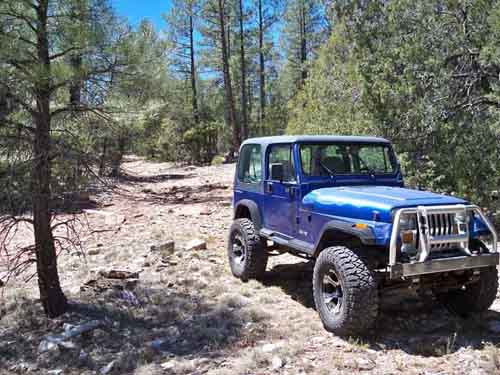 Parked at the wash on a
very rough road.
Parked at the wash on a
very rough road.
|
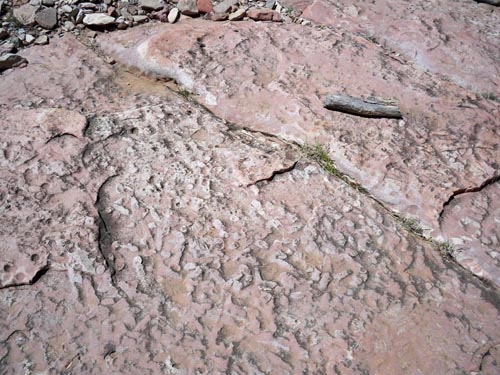 Large garden hose sized Paleophycus trace
fossils are very abundant in the layers near the fish beds
Large garden hose sized Paleophycus trace
fossils are very abundant in the layers near the fish beds
|
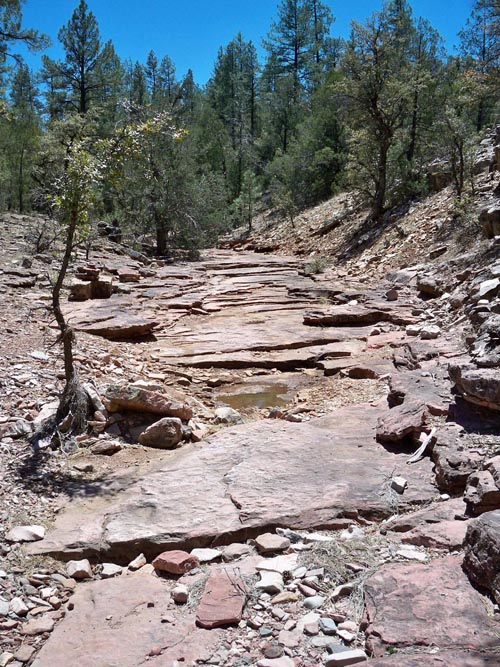 The Stoyanow "Red Arthrodire Beds" really
are stained red and have a high sand content
that is also very ruddy in color
The Stoyanow "Red Arthrodire Beds" really
are stained red and have a high sand content
that is also very ruddy in color
|
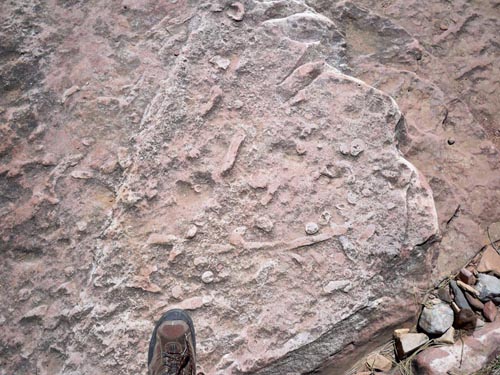 More large trace fossils, most likely from
crustaceans like crayfish or shrimp
More large trace fossils, most likely from
crustaceans like crayfish or shrimp
|
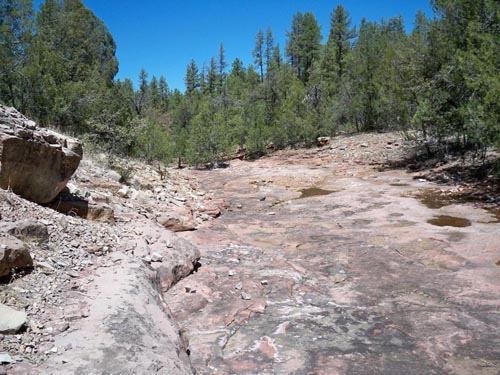 Beds of trace fossils
Beds of trace fossils
|
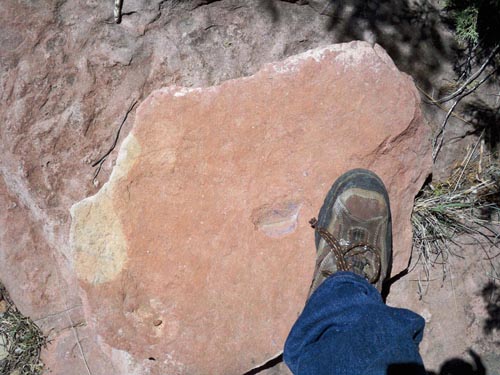 First find, a big slab with a dorsal medial plate
which would have been on its ridged back
First find, a big slab with a dorsal medial plate
which would have been on its ridged back
|
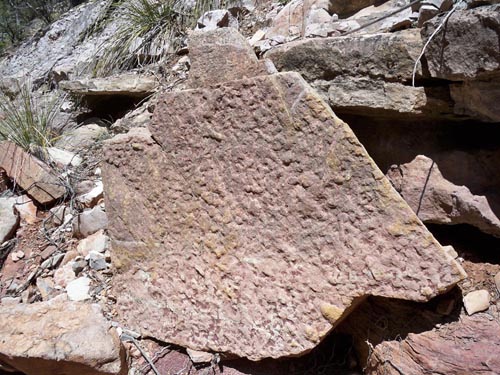 large upright slab of trace fossils
large upright slab of trace fossils
|
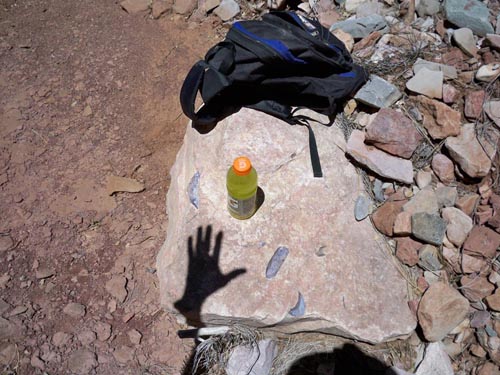 An entire collection of larger fish plates! They are
moslty hollows where the bone left an impression, but a large
number of them also have the complete bone inside them too.
An entire collection of larger fish plates! They are
moslty hollows where the bone left an impression, but a large
number of them also have the complete bone inside them too.
|
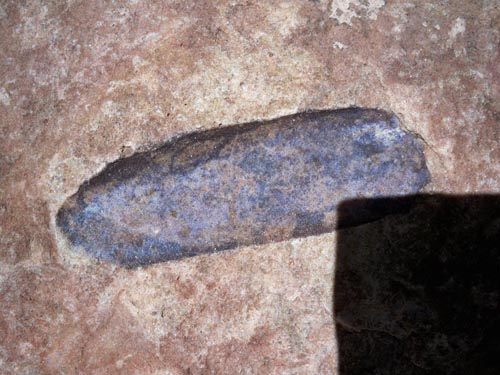 Large six inch plate
Large six inch plate
|
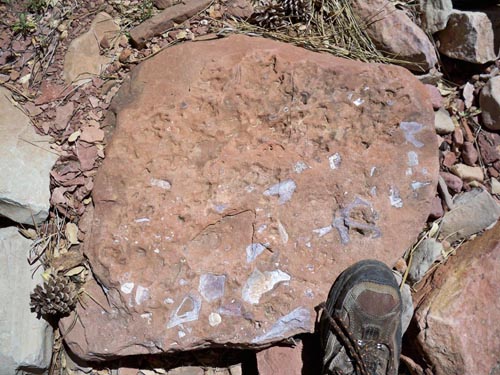 One of the best large blocks of fish material I found
was this beast, packed with fish plates and bone
One of the best large blocks of fish material I found
was this beast, packed with fish plates and bone
|
 Close up of the variety of pieces. Everything here is
over 350 million years old.
Close up of the variety of pieces. Everything here is
over 350 million years old.
|
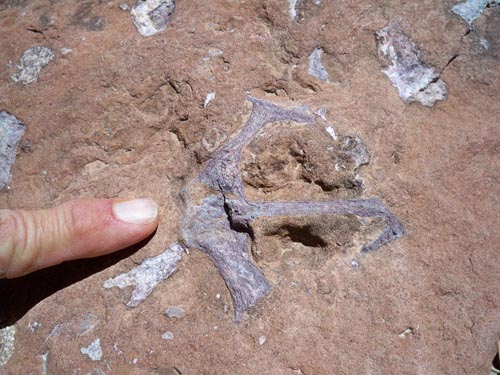 This is an unusual bone, I suspect it is either the top or bottom
of the skull near the jaw.
This is an unusual bone, I suspect it is either the top or bottom
of the skull near the jaw.
|
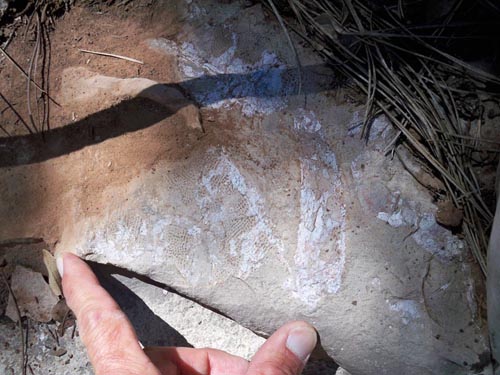 A large number of plates have a patterned texture
on thier exteriors
A large number of plates have a patterned texture
on thier exteriors
|
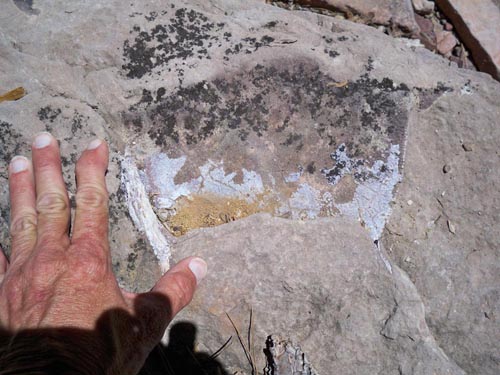 One of the largest plates I found this day
on the left edge you can see some of the original
bone, nearly 3/4 of an inch thick!
One of the largest plates I found this day
on the left edge you can see some of the original
bone, nearly 3/4 of an inch thick!
|
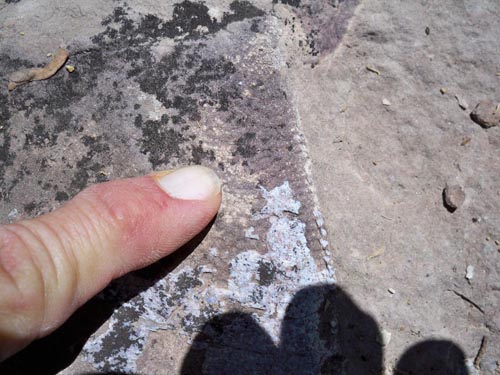 Close up of that large bone plate, serrations on edges.
Close up of that large bone plate, serrations on edges.
|
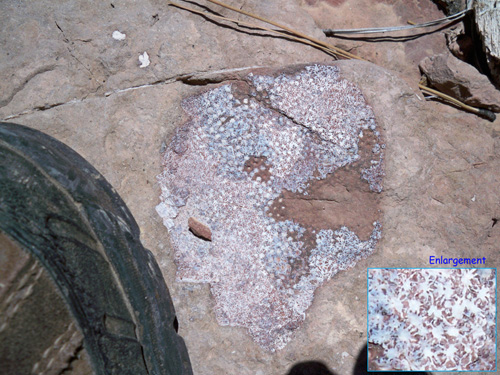 Very peculiar star pattern on this plate, I had never
seen this before
Very peculiar star pattern on this plate, I had never
seen this before
|
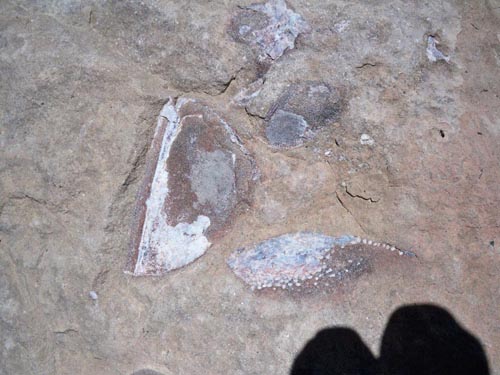 2 inch fish armor plates
2 inch fish armor plates
|
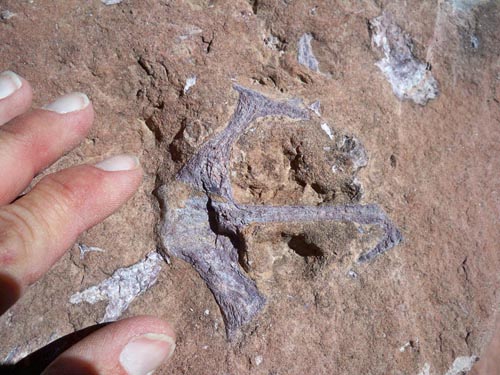 On the way back up the creek bottom, I
took a better shot of the unusual bone
On the way back up the creek bottom, I
took a better shot of the unusual bone
|
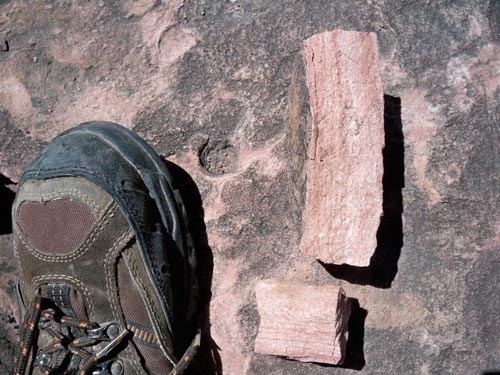 The really sandy beds had the large trace fossils in them
and represent a marine delta enviornment with a brackish
water mix. Here is a side view of the sandy laters in the
dolomite.
The really sandy beds had the large trace fossils in them
and represent a marine delta enviornment with a brackish
water mix. Here is a side view of the sandy laters in the
dolomite.
|
 A prize find - not only does this slab contain a nice plate in the
center, it shows preserved mud cracks indications of
subareal exposure. Perhaps a mud flat on the edge of the
sea delta.
A prize find - not only does this slab contain a nice plate in the
center, it shows preserved mud cracks indications of
subareal exposure. Perhaps a mud flat on the edge of the
sea delta.
|
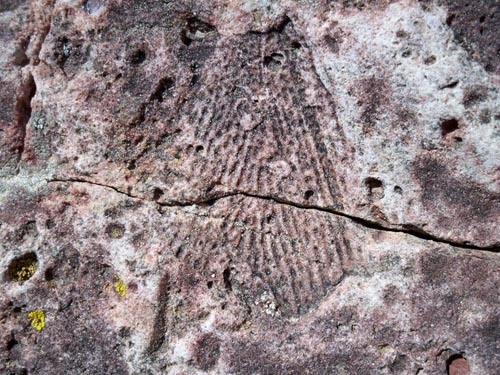 close up of the fan shaped plate on the
mud crack slab
close up of the fan shaped plate on the
mud crack slab
|
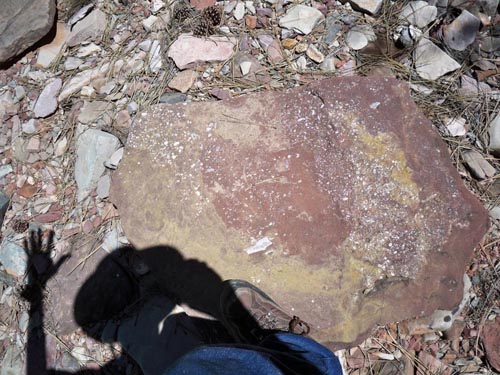 A big slab with literally thousands of pieces of fish material
ground up into little fragments. Im seeing the beach here...
A big slab with literally thousands of pieces of fish material
ground up into little fragments. Im seeing the beach here...
|
 Close up 1
Close up 1
|
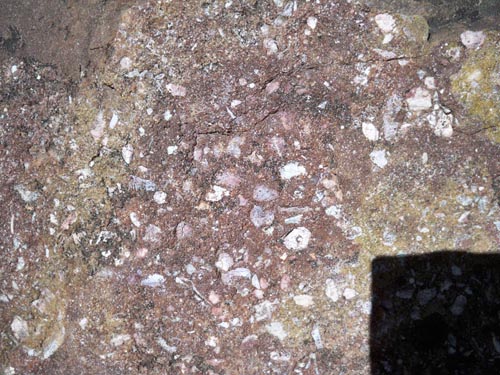 Close up 2
Close up 2
|
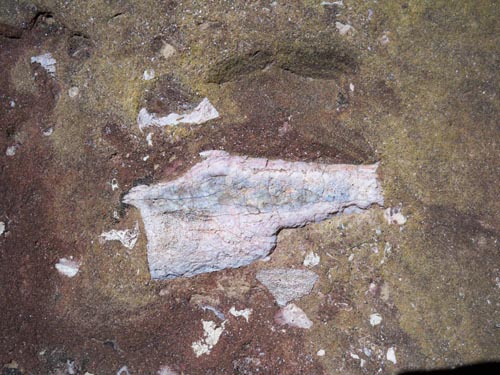 Multi colored bone about a quarter of an inch thick
on the big slab.
Multi colored bone about a quarter of an inch thick
on the big slab.
| | | | | | | |
 Paleo HOME
Paleo HOME
|